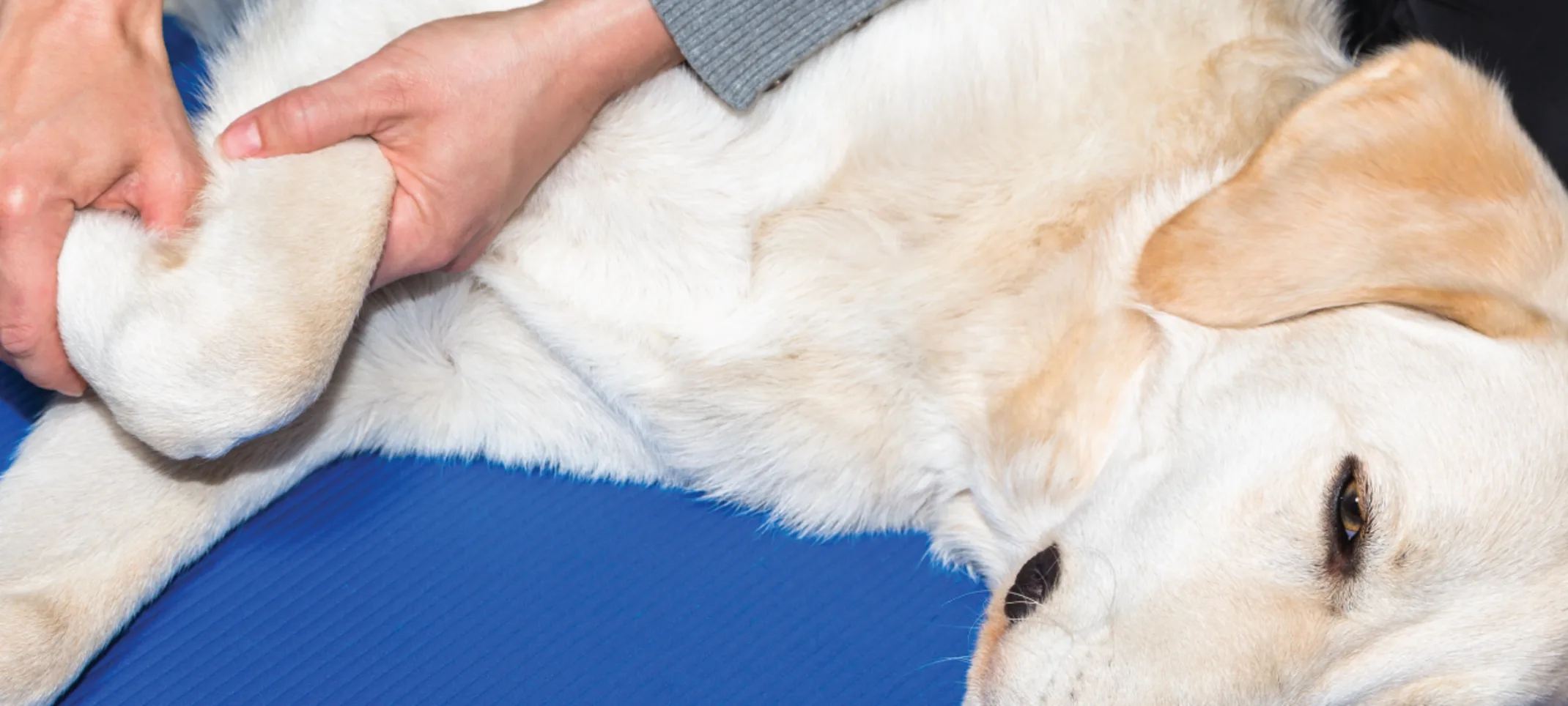Ehrlich Animal Hospital & Arthritis Therapy Center
Arthritis Therapy Center
By treating Arthritis early, there are many more options available and your pet will have a much improved quality of life.

Overview
Arthritis is a debilitating condition in pets. It tends to come on slowly and therefore is misinterpreted often by owners. The owner may assume it is a normal part of their pets’ aging process that they slow down. It is in a dogs’ nature not to show pain quickly, nor do they vocalize or cry easily. As a result, we often start managing arthritis in the later stages. By paying careful attention to your pets’ behavior and having a veterinarian examine your pet, the diagnosis of Arthritis can be made in the early stages. A good physical examination with x-rays can specifically identify which joints are involved. Reducing the inflammation is the primary goal. This can be accomplished by using a variety of treatments listed under Arthritis Therapy. By treating Arthritis early, there are many more options available and your pet will have a much improved quality of life.
Did you know that about 20% of all dogs in the United States suffer from Canine Arthritis?
Signs of Arthritis Include(but are not limited to):
Lethargy
Getting up or down slowly (carefully)
Low activity
Reluctance to run, jump or play
Lagging behind on walks
Unwillingness to extend rear legs
Aggressive or withdrawn behavior
Arthritis Treatment Options
Arthritis is a condition associated with inflammation in the joints. Arthritis can have many causes and it is generally a painful and chronic condition. There are various treatments available to manage the arthritic pet. The options are based upon a thorough evaluation of your pet by one of our doctors.
Weight
Obesity can cause tremendous strain on already painful joints.
A change in diet or an exercise routine may help to decrease weight.
Exercise
Increased low-impact exercise on a routine basis will help to maintain proper weight and keep joints functioning well.
Glucosamine
Nutritional supplements or nutraceuticals, such as Dasuquin, can be given daily by either flavored tablet or chew.
It helps to maintain healthy joint cartilage structure and reduces the deterioration of the joint, however, it can take approximately 4-6 weeks to see results.
There are no side effects to Dasuquin, so it is not required to perform bloodwork monitoring as with other treatment options available.
Adequan
This is an injectable drug that helps prevent the breakdown of joints and stimulates the repair process.
Injections can be performed at Ehrlich Animal Hospital if assistance is needed, or they may be administered by you at home.
It is a glucosamine derived drug and is very safe, therefore bloodwork monitoring is not required.
Laser Therapy
This non-invasive therapy can help decrease inflammation and decrease pain. In addition, it helps improve nerve function and vascular activity in the affected area.
The laser has a cumulative effect and can be used long term to help arthritis.
Initial x-rays are necessary for the doctor to determine severity of the issue and best use of the laser. Due to its external use, bloodwork monitoring is not needed.
Non-Steroidal Anti-Inflammarory Drug (NSAIDs):
Examples of this are Rimadyl, Deramaxx and Metacam. They work by reducing inflammation in the joints, but they do not repair or protect joints like other options.
NSAIDs are available in a chewable tablet, caplet or liquid. Effects are typically seen within hours.
Side effects such as gastrointestinal upset may happen. Since these drugs are processed by the liver and/or kidneys, routine bloodwork every 6 months is required to monitor the effects of the drug when used long term.
Stem Cell Therapy
This is a new, state of the art, natural and fast acting option to alleviate arthritis.
The procedure isolates your pets’ own stem cells and then injects them into the problem joints. It only takes a day and your pet can go home with you that evening.
Massage
Massage has been used for therapeutic purposes – on both humans and animals – since the very dawn of time. Its beneficial use has been documented in our earliest cultures from the Egyptians, to the Phoenicians, Greeks, and Romans and on to the present time. It is noteworthy, that in the very first books on human and veterinary medicine, entire chapters would be devoted to the use, benefits, and implementation of massage therapy.
Among the many documented benefits of massage are:
Enhances muscle tone and range of motion.
Reduces inflammation and swelling in the joints, thereby alleviating pain.
Promotes the healing process by increasing the flow of nutrients to the muscles, and aiding in carrying away excessive fluids and toxins.
Creates a positive effect on the contractual and release process of the muscles, releasing tension, and relaxing muscles.
Stimulates circulation by: defrosting frozen muscles, thereby releasing endorphins – the body’s natural pain killers.
Helps to maintain the whole body in better physical condition.
Relaxation and stress reduction
Increased flexibility of soft tissue
Reduction of edema
Muscle atrophy prevention
Loosening of scar tissue
